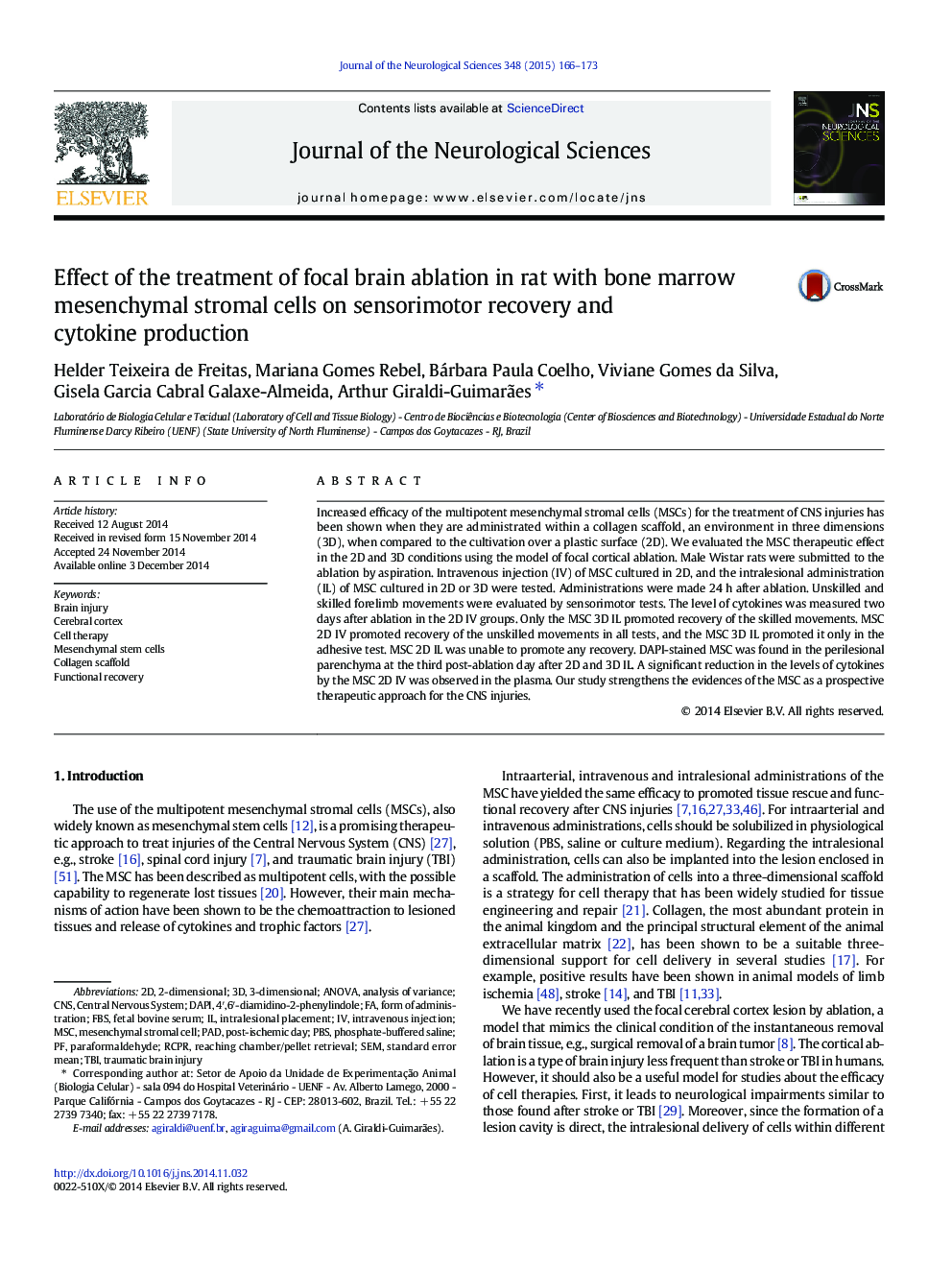| Article ID | Journal | Published Year | Pages | File Type |
|---|---|---|---|---|
| 1913420 | Journal of the Neurological Sciences | 2015 | 8 Pages |
•The treatment of the focal cortical ablation with the MSC was tested.•Intravenous (IV) vs. intralesional (IL) routes, and 2D vs. 3D (collagen) cultivations were compared.•Only MSC 2D IV and MSC 3D IL promoted sensorimotor recovery.•MSC decreased the level of cytokines in the plasma.•The results suggest the effectiveness of the MSC to treat CNS injuries.
Increased efficacy of the multipotent mesenchymal stromal cells (MSCs) for the treatment of CNS injuries has been shown when they are administrated within a collagen scaffold, an environment in three dimensions (3D), when compared to the cultivation over a plastic surface (2D). We evaluated the MSC therapeutic effect in the 2D and 3D conditions using the model of focal cortical ablation. Male Wistar rats were submitted to the ablation by aspiration. Intravenous injection (IV) of MSC cultured in 2D, and the intralesional administration (IL) of MSC cultured in 2D or 3D were tested. Administrations were made 24 h after ablation. Unskilled and skilled forelimb movements were evaluated by sensorimotor tests. The level of cytokines was measured two days after ablation in the 2D IV groups. Only the MSC 3D IL promoted recovery of the skilled movements. MSC 2D IV promoted recovery of the unskilled movements in all tests, and the MSC 3D IL promoted it only in the adhesive test. MSC 2D IL was unable to promote any recovery. DAPI-stained MSC was found in the perilesional parenchyma at the third post-ablation day after 2D and 3D IL. A significant reduction in the levels of cytokines by the MSC 2D IV was observed in the plasma. Our study strengthens the evidences of the MSC as a prospective therapeutic approach for the CNS injuries.
